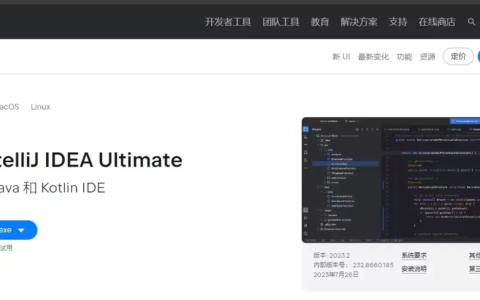Controlling nginx
Controlling nginx
Rotating Log-files
Upgrading Executable on the Fly
nginx can be controlled with signals. The process ID of the master process is written to the file by default. This name may be changed at configuration time, or in using the pid directive. The master process supports the following signals:
TERM, INTfast shutdown QUITgraceful shutdown HUPchanging configuration, keeping up with a changed time zone (only for FreeBSD and Linux), starting new worker processes with a new configuration, graceful shutdown of old worker processes USR1re-opening log files USR2upgrading an executable file WINCHgraceful shutdown of worker processes
Individual worker processes can be controlled with signals as well, though it is not required. The supported signals are:
TERM, INTfast shutdown QUITgraceful shutdown USR1re-opening log files WINCHabnormal termination for debugging (requires debug_points to be enabled)
Changing Configuration
In order for nginx to re-read the configuration file, a HUP signal should be sent to the master process. The master process first checks the syntax validity, then tries to apply new configuration, that is, to open log files and new listen sockets. If this fails, it rolls back changes and continues to work with old configuration. If this succeeds, it starts new worker processes, and sends messages to old worker processes requesting them to shut down gracefully. Old worker processes close listen sockets and continue to service old clients. After all clients are serviced, old worker processes are shut down.
Let’s illustrate this by example. Imagine that nginx is run on FreeBSD and the command
ps axw -o pid,ppid,user,%cpu,vsz,wchan,command | egrep '(nginx|PID)'
produces the following output:
PID PPID USER %CPU VSZ WCHAN COMMAND 33126 1 root 0.0 1148 pause nginx: master process /usr/local/nginx/sbin/nginx 33127 33126 nobody 0.0 1380 kqread nginx: worker process (nginx) 33128 33126 nobody 0.0 1364 kqread nginx: worker process (nginx) 33129 33126 nobody 0.0 1364 kqread nginx: worker process (nginx)
If HUP is sent to the master process, the output becomes:
PID PPID USER %CPU VSZ WCHAN COMMAND 33126 1 root 0.0 1164 pause nginx: master process /usr/local/nginx/sbin/nginx 33129 33126 nobody 0.0 1380 kqread nginx: worker process is shutting down (nginx) 33134 33126 nobody 0.0 1368 kqread nginx: worker process (nginx) 33135 33126 nobody 0.0 1368 kqread nginx: worker process (nginx) 33136 33126 nobody 0.0 1368 kqread nginx: worker process (nginx)
One of the old worker processes with PID 33129 still continues to work. After some time it exits:
PID PPID USER %CPU VSZ WCHAN COMMAND 33126 1 root 0.0 1164 pause nginx: master process /usr/local/nginx/sbin/nginx 33134 33126 nobody 0.0 1368 kqread nginx: worker process (nginx) 33135 33126 nobody 0.0 1368 kqread nginx: worker process (nginx) 33136 33126 nobody 0.0 1368 kqread nginx: worker process (nginx)
Rotating Log-files
In order to rotate log files, they need to be renamed first. After that USR1 signal should be sent to the master process. The master process will then re-open all currently open log files and assign them an unprivileged user under which the worker processes are running, as an owner. After successful re-opening, the master process closes all open files and sends the message to worker process to ask them to re-open files. Worker processes also open new files and close old files right away. As a result, old files are almost immediately available for post processing, such as compression.
Upgrading Executable on the Fly
In order to upgrade the server executable, the new executable file should be put in place of an old file first. After that USR2 signal should be sent to the master process. The master process first renames its file with the process ID to a new file with the suffix, e.g. , then starts a new executable file that in turn starts new worker processes:
PID PPID USER %CPU VSZ WCHAN COMMAND 33126 1 root 0.0 1164 pause nginx: master process /usr/local/nginx/sbin/nginx 33134 33126 nobody 0.0 1368 kqread nginx: worker process (nginx) 33135 33126 nobody 0.0 1380 kqread nginx: worker process (nginx) 33136 33126 nobody 0.0 1368 kqread nginx: worker process (nginx) 36264 33126 root 0.0 1148 pause nginx: master process /usr/local/nginx/sbin/nginx 36265 36264 nobody 0.0 1364 kqread nginx: worker process (nginx) 36266 36264 nobody 0.0 1364 kqread nginx: worker process (nginx) 36267 36264 nobody 0.0 1364 kqread nginx: worker process (nginx)
After that all worker processes (old and new ones) continue to accept requests. If the WINCH signal is sent to the first master process, it will send messages to its worker processes, requesting them to shut down gracefully, and they will start to exit:
PID PPID USER %CPU VSZ WCHAN COMMAND 33126 1 root 0.0 1164 pause nginx: master process /usr/local/nginx/sbin/nginx 33135 33126 nobody 0.0 1380 kqread nginx: worker process is shutting down (nginx) 36264 33126 root 0.0 1148 pause nginx: master process /usr/local/nginx/sbin/nginx 36265 36264 nobody 0.0 1364 kqread nginx: worker process (nginx) 36266 36264 nobody 0.0 1364 kqread nginx: worker process (nginx) 36267 36264 nobody 0.0 1364 kqread nginx: worker process (nginx)
After some time, only the new worker processes will process requests:
PID PPID USER %CPU VSZ WCHAN COMMAND 33126 1 root 0.0 1164 pause nginx: master process /usr/local/nginx/sbin/nginx 36264 33126 root 0.0 1148 pause nginx: master process /usr/local/nginx/sbin/nginx 36265 36264 nobody 0.0 1364 kqread nginx: worker process (nginx) 36266 36264 nobody 0.0 1364 kqread nginx: worker process (nginx) 36267 36264 nobody 0.0 1364 kqread nginx: worker process (nginx)
It should be noted that the old master process does not close its listen sockets, and it can be managed to start its worker processes again if needed. If for some reason the new executable file works unacceptably, one of the following can be done:
-
Send the HUP signal to the old master process. The old master process will start new worker processes without re-reading the configuration. After that, all new processes can be shut down gracefully, by sending the QUIT signal to the new master process.
-
Send the TERM signal to the new master process. It will then send a message to its worker processes requesting them to exit immediately, and they will all exit almost immediately. (If new processes do not exit for some reason, the KILL signal should be sent to them to force them to exit.) When the new master process exits, the old master process will start new worker processes automatically.
If the new master process exits then the old master process discards the suffix from the file name with the process ID.
If upgrade was successful, then the QUIT signal should be sent to the old master process, and only new processes will stay:
PID PPID USER %CPU VSZ WCHAN COMMAND 36264 1 root 0.0 1148 pause nginx: master process /usr/local/nginx/sbin/nginx 36265 36264 nobody 0.0 1364 kqread nginx: worker process (nginx) 36266 36264 nobody 0.0 1364 kqread nginx: worker process (nginx) 36267 36264 nobody 0.0 1364 kqread nginx: worker process (nginx)
2024最新激活全家桶教程,稳定运行到2099年,请移步至置顶文章:https://sigusoft.com/99576.html
版权声明:本文内容由互联网用户自发贡献,该文观点仅代表作者本人。本站仅提供信息存储空间服务,不拥有所有权,不承担相关法律责任。如发现本站有涉嫌侵权/违法违规的内容, 请联系我们举报,一经查实,本站将立刻删除。 文章由激活谷谷主-小谷整理,转载请注明出处:https://sigusoft.com/11708.html













